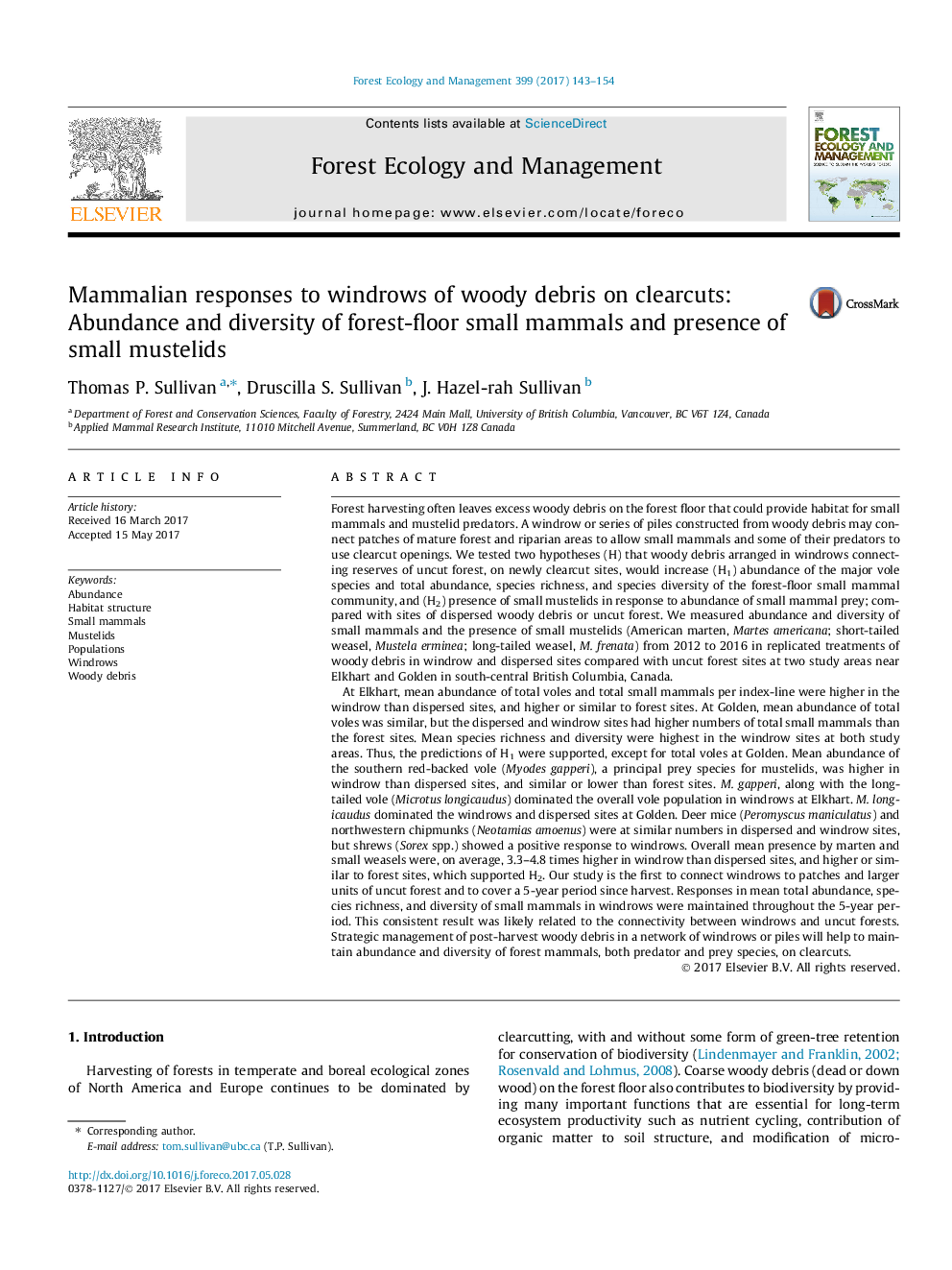| Article ID | Journal | Published Year | Pages | File Type |
|---|---|---|---|---|
| 4759375 | Forest Ecology and Management | 2017 | 12 Pages |
Abstract
At Elkhart, mean abundance of total voles and total small mammals per index-line were higher in the windrow than dispersed sites, and higher or similar to forest sites. At Golden, mean abundance of total voles was similar, but the dispersed and windrow sites had higher numbers of total small mammals than the forest sites. Mean species richness and diversity were highest in the windrow sites at both study areas. Thus, the predictions of H1 were supported, except for total voles at Golden. Mean abundance of the southern red-backed vole (Myodes gapperi), a principal prey species for mustelids, was higher in windrow than dispersed sites, and similar or lower than forest sites. M. gapperi, along with the long-tailed vole (Microtus longicaudus) dominated the overall vole population in windrows at Elkhart. M. longicaudus dominated the windrows and dispersed sites at Golden. Deer mice (Peromyscus maniculatus) and northwestern chipmunks (Neotamias amoenus) were at similar numbers in dispersed and windrow sites, but shrews (Sorex spp.) showed a positive response to windrows. Overall mean presence by marten and small weasels were, on average, 3.3-4.8 times higher in windrow than dispersed sites, and higher or similar to forest sites, which supported H2. Our study is the first to connect windrows to patches and larger units of uncut forest and to cover a 5-year period since harvest. Responses in mean total abundance, species richness, and diversity of small mammals in windrows were maintained throughout the 5-year period. This consistent result was likely related to the connectivity between windrows and uncut forests. Strategic management of post-harvest woody debris in a network of windrows or piles will help to maintain abundance and diversity of forest mammals, both predator and prey species, on clearcuts.
Related Topics
Life Sciences
Agricultural and Biological Sciences
Ecology, Evolution, Behavior and Systematics
Authors
Thomas P. Sullivan, Druscilla S. Sullivan, J. Hazel-rah Sullivan,
